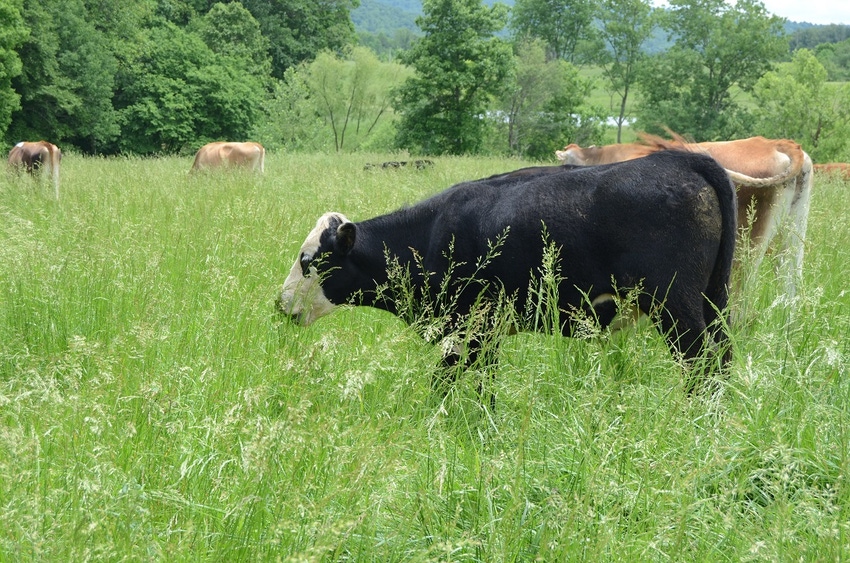
Recently, I heard the late Gordon Hazard say on a video that cattlemen in his country would often stop feeding hay when their extremely short grass greened up. That was and still is a big, big mistake.
In Tennessee the same is true. Hazard also said that short grass in the spring that was grazed would produce 40% less forage during the growing season. That is also very important.
One of my major animal health considerations for spring is plant health. Some real thought is needed in much of the US. One of the complaints I hear every year in areas that are hit by drought is that nothing is growing. When I ask what was growing there a few weeks earlier the answer usually received is fescue, brome, bluegrass and white clover. Think about it and I think you will agree that all of these plants grow on the top of the ground and they all love and utilize and/or use up the moisture. They dry out the soil.
Fescue robs the moisture and hormonally and chemically retards other plants from growing. The same is true of ryegrass. We need a little green grass in the spring, some brown leftover grass from early fall and a bunch of C4 grasses that are getting started. One of the biggest animal health messes I have ever seen was the year that "yours truly" over-seeded bermudagrass with a bunch of Marshall ryegrass. The ryegrass was knock-down beautiful in April and persisted through heavy grazing into early July. It stopped raining in late June and the bermudagrass never got off the ground. I created a desert. The cattle never gained a pound in July and August and lost condition until we went to feeding them in early September. We fed them hard all winter.
Ray Bannister, who ranches in eastern Montana, that the key to bluegrass is to graze it severely in the early to mid-spring.
With fescue you have to get it under control before the frost stops. Concerning fescue in the spring, do not do a thing to allow it to get ahead of the other pasture plants or the cattle. I think that we are better off to burn it at four to six inches high in front of and behind the cattle after the frost stops. We do this burn with 4 to 6 ounces of paraquat per acre. We do this "burn" on quality sites where the cool-season grasses (C3) are going to blaze. We don't do it everywhere.
I catch a lot of questions and quite a bit of hell over my chemical burn recommendations. We have been spending $1 to $1.25 worth of chemical that oxidizes the water-loving plants and seeds, sending them dormant, while having little effect on warm-season plants that we are wanting to propagate and grow in big volumes. The deep root systems of warm-season plants build new soil and quickly help restore the needed mineral, water and energy cycles and return the biology of the ground. The cattle make a bunch of positive responses in health and gains. Remember that healthy cattle are the end product that we market.
We view and monitor soil almost every day. We know that the soil is our basis for health. If we are in the food business then we are in the health business. Healthy people require healthy soil that grows tall healthy plants and feeds healthy cattle. This circle of health is the natural model. It is our emphasis for spring.
Yes, we work to limit some weeds and brush that become negative, but the truth is that our management mistakes are the most common problem. Proactive grazing decisions lead to our most positive results. Spring considerations are important. Real important.
About the Author(s)
You May Also Like






